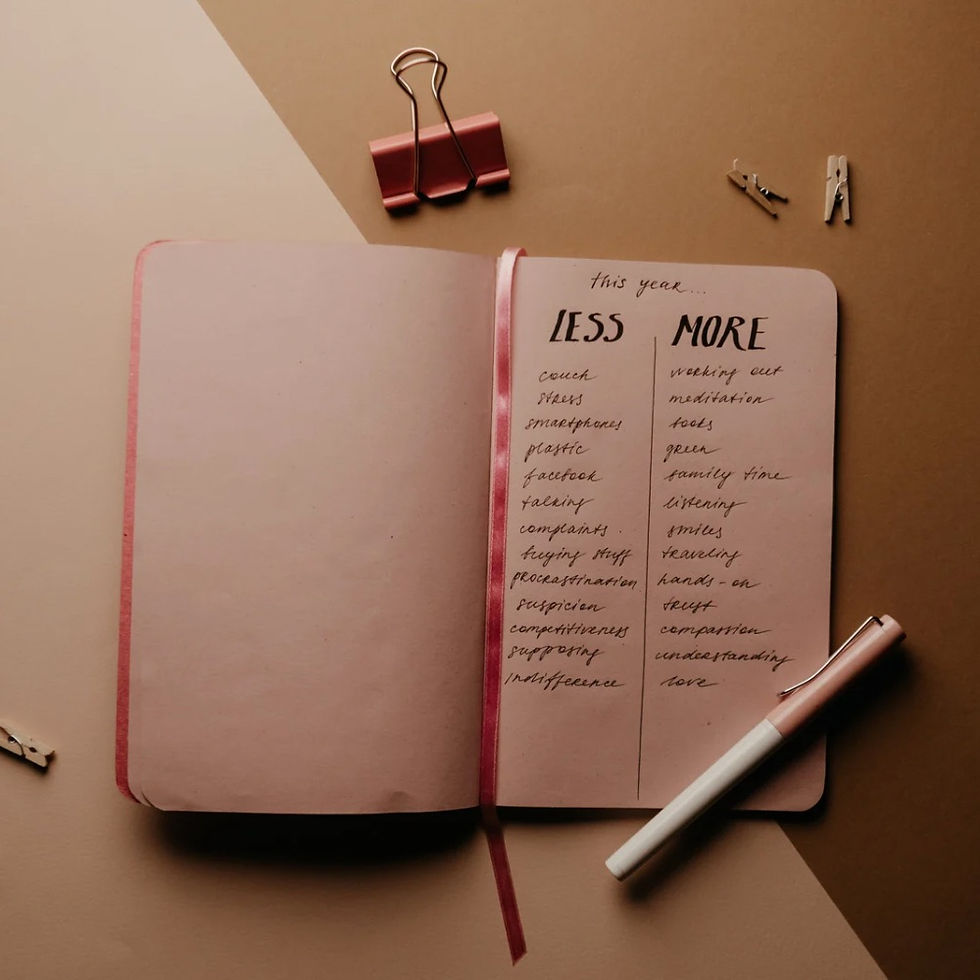How to Use Daily Planning to Support Your Nervous System
- Julia Maslava

- Oct 20
- 3 min read
Updated: Nov 15
Create calm, build resilience, and feel more in control of your day—gently.

Why Your Nervous System Needs Gentle Structure
In our fast-paced, always-on world, our nervous systems are often in a constant state of alert. From overflowing inboxes to back-to-back commitments, it’s easy to feel overwhelmed, scattered, or simply exhausted. But there’s good news: a gentle daily planning routine can act as a soothing anchor for your nervous system—helping you feel safe, supported, and more in control of your day.
This isn’t about productivity for productivity’s sake. It’s about nervous system nourishment—creating rhythms that regulate stress, build emotional resilience, and bring more peace into your everyday life.
How Daily Planning Affects Your Nervous System and Support It
When your brain knows what to expect, it relaxes. Predictable routines help regulate cortisol (your stress hormone), reduce mental fatigue, and create a sense of emotional safety.
Here’s how daily planning helps:
• Reduces uncertainty → which calms anxiety
• Creates structure → which soothes overthinking
• Supports emotional regulation → through intentional pauses
• Builds trust with yourself → by honoring your rhythms
1. Start With a Grounding Morning Routine
Your morning sets the tone for the rest of your day. A mindful planning ritual helps your nervous system ease into activity.
Try this:
• Sit quietly with a warm drink for 5 minutes before checking your phone.
• Use a Mindful Morning Planner or journal to ask:
How do I feel right now?
What do I need today—emotionally, physically, mentally?
What is one gentle intention I can carry through the day?
💡 Pro Tip: Keep your to-do list short. Choose 3 main tasks and 1 nourishing activity (like a walk, rest, or creative play).
2. Create “Anchor Points” in Your Day
Your nervous system thrives on rhythm. Build in small, predictable check-ins.
Anchor points could be:
• A mid-morning break with breathwork or journaling
• A quiet lunch away from screens
• A 3 p.m. stretch and hydration check
• Evening journaling or gratitude reflection
You can use your digital or printable daily planner to block these into your schedule like mini-rituals of restoration.
3. Use Planning Tools That Feel Good to You
There’s no one-size-fits-all. Choose tools that support ease, not pressure.
Some options:
• Digital planners with calming colors and templates for emotions, energy, and goals
• Wellness planners with prompts for rest, nourishment, and mood tracking
• Simple paper planners if you feel calmer unplugged
Remember, the goal isn’t perfection—it’s self-support.
4. Wind Down With Purpose
The nervous system needs time to shift from “go-mode” to rest-and-digest mode. Ending your day with a closing ritual is just as important as how you start it.
Evening planner ideas:
• Log your “small wins” or moments of peace
• Brain dump tomorrow’s tasks so your mind can rest
• Reflect on: What helped me feel grounded today?
Let your planner become a place where your nervous system can exhale.
Daily Planning is More Than Productivity
When used with care and intention, daily planning becomes an act of nervous system support. It invites you to slow down, listen inward, and build your life with compassion. It reminds you that you are not behind—you are building safety and joy, one gentle step at a time.
🛠 Tools to Support You
Looking for calming, intuitive tools?
Explore our collection of free tools here: Mindful Morning Templates, Evening Wind-Down Planner and more
Check out our Wellness Planners.



























Comments